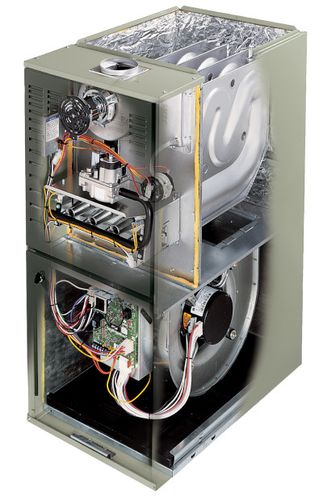A Guide to High-Efficiency Furnaces (Savings, Environmental Impact)
High-efficiency furnaces offer significant advantages over traditional furnaces, both in terms of energy consumption and overall performance. Here are some key benefits and an overview of how they work:
Benefits:
1. Energy Savings : High-efficiency furnaces are designed to use less fuel to generate the same amount of heat, which translates into lower energy bills and reduced environmental impact.
2.Improved Heating: These furnaces provide more consistent and comfortable heat distribution throughout your home, eliminating cold spots and fluctuations in temperature.
3. Reduced Carbon Footprint: By consuming less fuel, high-efficiency furnaces emit fewer greenhouse gases, contributing to a healthier environment.
4. Quieter Operation: Advanced technology and design improvements make high-efficiency furnaces operate more quietly than older, less efficient models.
5. Longer Lifespan: High-efficiency models are often built with superior materials and technology, potentially extending the lifespan of the furnace compared to standard models.
How It Works:
High-efficiency furnaces achieve their performance through a combination of advanced technologies:
1. Condensing Process: Unlike conventional furnaces, high-efficiency models capture heat from the furnace's exhaust gases through a secondary heat exchanger. This process condenses the exhaust gas, releasing additional heat that is used to warm your home. This condensing process significantly increases the furnace's efficiency.
2.Sealed Combustion: High-efficiency furnaces use sealed combustion chambers, which draw air from outside the home for combustion. This method is safer and more efficient than using indoor air, as it prevents backdrafts and reduces heat loss.
3.Variable Speed Blowers: Many high-efficiency furnaces are equipped with variable speed blowers that can adjust the air flow based on the heating needs of your home. This not only improves comfort but also reduces energy consumption by not operating at full capacity all the time.
4. Electronic Ignition: Instead of a continuously burning pilot light, high-efficiency furnaces use electronic ignition systems. These systems only activate the burner when the furnace needs to produce heat, saving energy that would otherwise be wasted. By incorporating these technologies, high-efficiency furnaces can achieve AFUE (Annual Fuel Utilization Efficiency) ratings of 90% or higher, meaning they convert 90% or more of the fuel into heat for your home. This efficiency can provide significant savings and comfort improvements over the lifetime of the furnace.
Standard-Efficiency vs. High-Efficiency Gas Furnaces
Furnace Efficiency is measured by its ability to produce warm air that is being used to heat space, versus how much is being exhausted as waste. In gas furnaces, we’re trying to keep as much of the BTUs as possible,
Gas furnace cannot be 100% efficient. To be considered high efficiency, the rating needs to be between 90 and 97%.
The best high-efficiency furnaces are up to 97, 98% efficient, whereas a standard efficiency is 80%. In an 80% furnace, 80% of the heat is being used, and 20% is being exhausted .
With multiple locations throughout North Shore and Northwest suburbs of Chicago, Illinois, Emergency Plumbing offers promt and professional plumbing services.
Are you looking for a reliable plumber near me in the Arlington Heights, Bannockburn, Barrington, or surrounding areas?
Our local plumbing company offers expert services, catering to all your needs. Whether you're in the heart of Buffalo Grove, the serene streets of Deerfield, or require an emergency plumber in Des Plaines or Elk Grove Village, we are here to help. Our plumbing contractors are well-versed in the unique plumbing systems of Glencoe, Glenview, Hawthorn Woods, and Highland Park.
For those in Highwood, Hoffman Estates, or the quaint town of India Creek, our team guarantees prompt and efficient service.
Residents of Inverness, Kildeer, Lake Bluff, Lake Forest, and Lake Zurich can also rely on our expertise. We extend our services to Long Grove, Mettawa, Lincolnshire, Mount Prospect, Mundelein, Northbrook, and Palatine.
Need a plumber in Prospect Heights, Ravinia, RiverWoods, Rolling Meadows, Vernon Hills, Wauconda, Wheeling, Wilmette, or Winnetka? Look no further! As a trusted plumbing contractor, we ensure that your plumbing issues are solved quickly and efficiently, keeping your home or business running smoothly.



